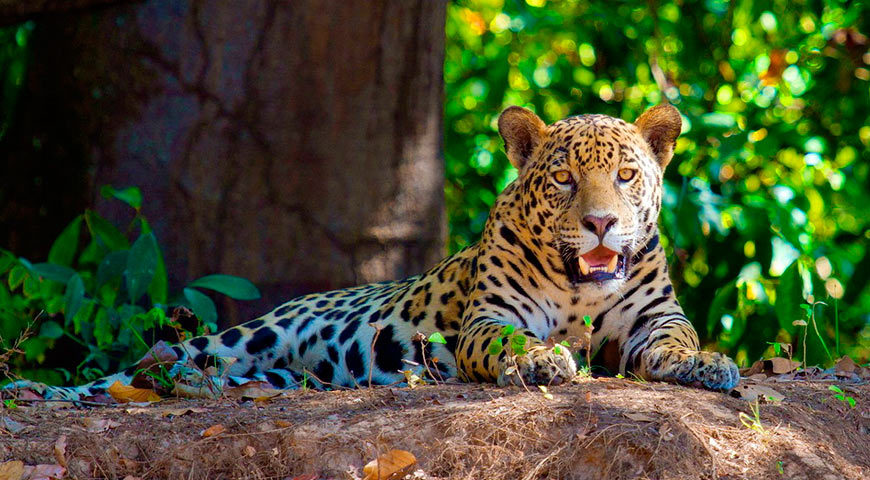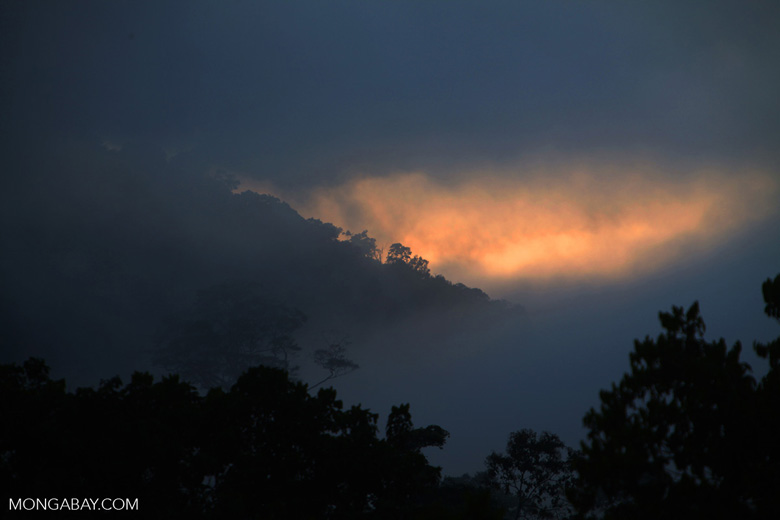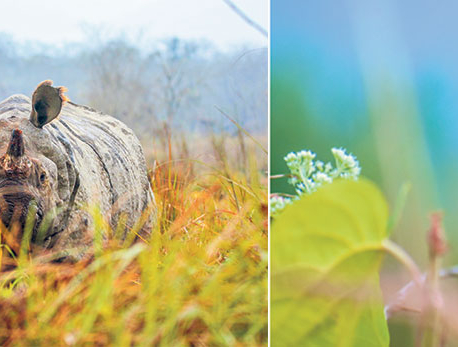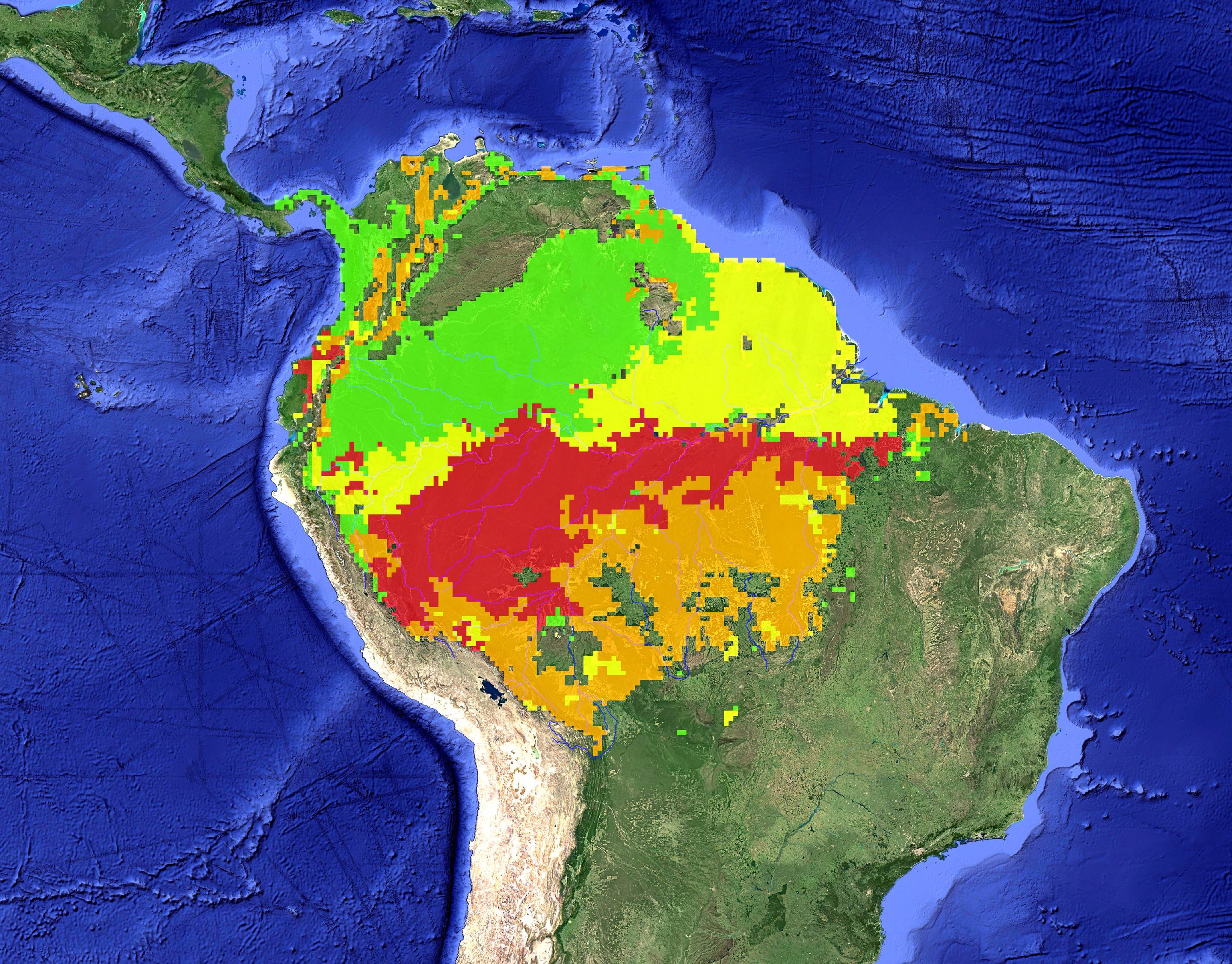
OR
From sink to source: Droughts are changing the Amazon rainforest
Published On: August 24, 2018 12:40 PM NPT By: Agencies

- Droughts are becoming more frequent in the Amazon rainforest, with three “100-year” droughts happening in the space of just 10 years.
- A new study finds that, on average, the most affected parts of the rainforest lost around 35 inches (0.9 meters) in the years following the 2005 drought.
- The researchers estimate that the loss of this tree cover means that drought-caused forest changes in the Amazon between 2005 and 2008 translate to 270 million metric tons of lost carbon annually.
Because they take vast amounts of carbon dioxide out of the atmosphere, rainforests are an important part of the planet’s carbon cycle and their conservation is playing front and center in major international efforts to combat global warming. But new research finds just one season of drought can reduce the carbon dioxide absorption ability of the world’s biggest rainforest – the Amazon – for years to come.
And as droughts seem to be occurring more frequently in rainforests, scientists worry that these important carbon sinks may instead become carbon sources.
In a study published recently in Nature, scientists at NASA’s Jet Propulsion Laboratory in the U.S. used lidar data captured by satellites to map changes in forest canopy in the Amazon following a particularly severe drought in 2005. Lidar, which stands for “Light Detection and Ranging” uses lasers to measure distances and create three-dimensional representations of surface features like canyons, craters and, in this case, trees.
This image, based on measurements taken by the Tropical Rainfall Measuring Mission (TRMM), shows the areas of the Amazon basin that were affected by the severe 2005 drought. Areas in yellow, orange, and red experienced light, moderate, and severe drought, respectively. Green areas did not experience drought. Image courtesy of NASA/JPL-Caltech /Google
By mapping the Amazon’s tree cover using lidar, the NASA researchers were able to find and quantify gaps in tree cover caused by drought-induced leaf loss and tree death. They discovered that, on average, the most affected parts of the rainforest lost around 35 inches (0.9 meters) in the years following the 2005 drought.
This is because when a rainforest tree is stressed by drought, one of its first responses is to shed its leaves. If the drought continues too long, the tree will die. Taller trees tend to die first in a drought because, simply put, they need more water and it’s harder to pump that water up, say, 50 feet than it is to get it up five.
When these tall trees die, they bring down the overall height of the forest around them. Big trees also sequester a disproportionate amount of carbon dioxide, so their loss means a forest is not able to store as much carbon as it once did. And as the big trees decompose, their stored carbon is released back into the atmosphere, tilting a forest’s carbon budget from sink toward source.
The researchers found that, added up, drought-caused forest changes in the Amazon between 2005 and 2008 (the last year for which data were available) translate to 270 million metric tons of lost carbon annually.
Rainforests not only react to climate – they also create it. Last year, scientists discovered that much of the rain that falls in a rainforest comes from water vapor that trees release through their leaves. But if a drought makes trees loses their leaves, then this water doesn’t get added back to the atmosphere, making it likelier that another drought will happen.

Clouds form in the Peruvian rainforest as water vapor is released from leaves via a process called transpiration.
“The pervasive drought legacies in these ecosystems may have long-term effects on the tropical carbon sink and the overall terrestrial carbon budget, leading to an accelerated positive feedback to regional and global climate,” the researchers write in their study.
The study only looked at the years following the 2005 drought, which was so severe that it would normally be a once-in-a-century event. But with two other similarly severe droughts following closely in 2010 and 2015, this seems to no longer be the case.
The researchers write that if this is indeed the new normal for Amazon rainforest, then the consequences could be dire both for the Amazon and for a world that depends on it to regulate the global climate.
“Our results clearly indicate that the Amazon forests may lose their role as a robust sink of atmospheric carbon in the face of repeated severe droughts.”
You May Like This

In sync with nature
Nature and wildlife have always been a big part of Karan Giri’s life. With a father who is a naturalist... Read More...

MARCH 24: 6 things to know by 6 PM today
Your daily dose of missed important news of the day. ... Read More...

New Interpol project to curb wildlife trafficking
KATHMANDU, Jan 21: The 23rd Asian Regional Conference of Interpol concluded Friday, launching a new project to identify and dismantle organized... Read More...




Just In
- Govt receives 1,658 proposals for startup loans; Minimum of 50 points required for eligibility
- Unified Socialist leader Sodari appointed Sudurpaschim CM
- One Nepali dies in UAE flood
- Madhesh Province CM Yadav expands cabinet
- 12-hour OPD service at Damauli Hospital from Thursday
- Lawmaker Dr Sharma provides Rs 2 million to children's hospital
- BFIs' lending to private sector increases by only 4.3 percent to Rs 5.087 trillion in first eight months of current FY
- NEPSE nosedives 19.56 points; daily turnover falls to Rs 2.09 billion
















Leave A Comment